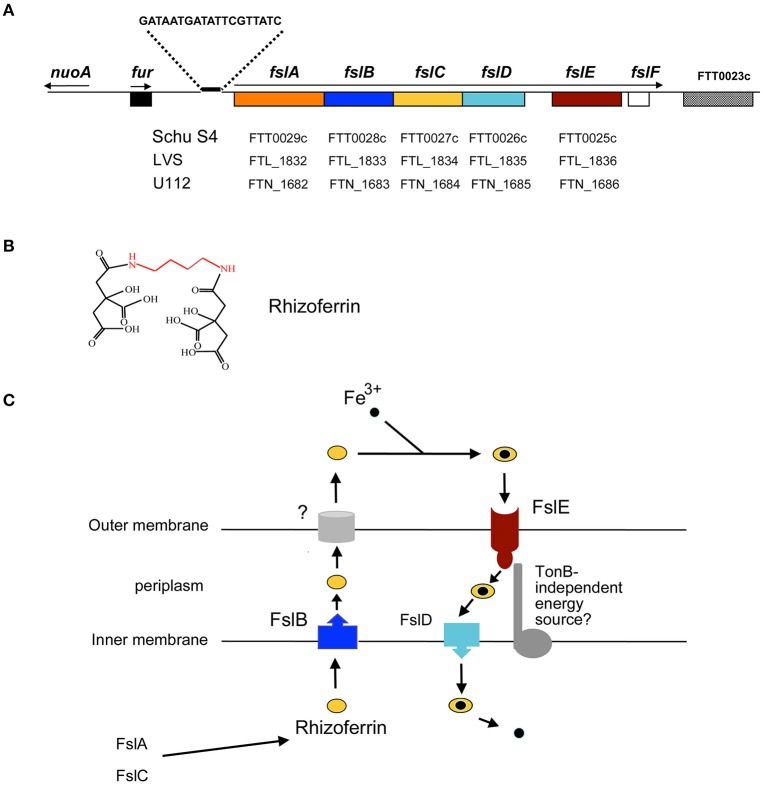Figure 1.
Siderophore-mediated iron acquisition in F. tularensis. (A) The fur-fsl locus of the F. tularensis subsp. tularensis chromosome is depicted and the corresponding gene designations in the Schu S4, LVS, and U112 genomes are indicated. The Furbox upstream of the fslABCDEF operon is shown. Arrows indicate the direction and extent of transcribed regions. (B) A schematic of the F. tularensis siderophore, rhizoferrin comprising two citrate molecules linked by amide bonds to a putrescine backbone (in red). (C) Current model for siderophore-mediated iron acquisition in F. tularensis and the roles of the fsl operon products. FslA and FslC encode enzymes for biosynthesis of the siderophore. The siderophore is released into the extracellular medium by the action of FslB and an as yet unknown outer membrane component. The outer membrane siderophore receptor FslE, and FslD in the inner membrane mediate uptake of the ferric-siderophore complex. It is not known if a TonB analog facilitates FslE function.

